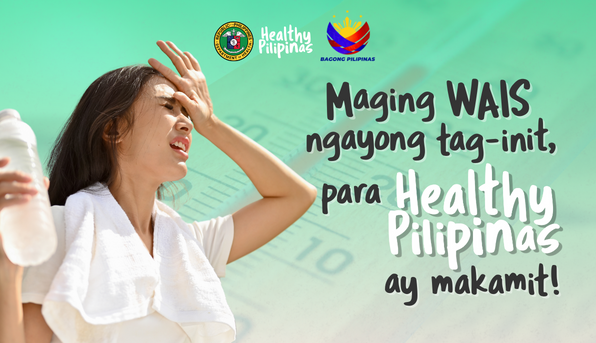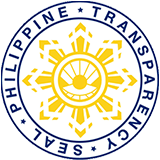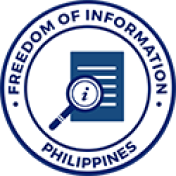
As the scorching sun intensifies its grip and temperatures soar, it’s not just a regular heat wave; it might be a manifestation of the El Niño phenomenon. El Niño, a climate phenomenon characterized by warmer-than-average sea temperatures in the Pacific Ocean, has far-reaching effects that extend beyond meteorological concerns. From health and agriculture to water resources and livelihoods, this natural event demands our attention and proactive measures. In this article, we aim to generate public awareness about the impacts of El Niño and, more importantly, encourage everyone to play a role in conservation efforts to mitigate its effects.
El Niño’s Footprint: A Multifaceted Impact
El Niño’s warm embrace brings more than just scorching temperatures. It disrupts weather patterns, leading to:
- Reduced rainfall: Droughts become more frequent and severe, impacting agriculture, water resources, and ecosystems.
- Increased health risks: Heat waves and stagnant air can exacerbate respiratory illnesses and waterborne diseases.
- Food insecurity: Crop yields suffer due to lack of water, leading to potential food shortages and price hikes.
- Livelihood losses: Farmers, fishers, and others dependent on natural resources face economic hardship.
El Niño disrupts normal weather patterns, leading to extreme climatic conditions in various regions. In the context of health, prolonged periods of heat can result in heat-related illnesses, dehydration, and exacerbate existing health conditions. Agriculture faces challenges such as droughts, reduced crop yields, and disruptions in food production. Water resources become scarce, affecting both urban and rural areas. Livelihoods dependent on agriculture and water-intensive industries suffer, creating a domino effect on the economy.
Generating Public Awareness
Creating awareness is the first step in fostering resilience against the impacts of El Niño. Public service announcements, social media campaigns, and community workshops are effective tools to disseminate information. Local governments, environmental agencies, and health organizations should collaborate to educate the public about the signs of El Niño, its potential impacts, and the importance of preparedness.
While El Niño’s arrival may be inevitable, its impact doesn’t have to be debilitating. By adopting proactive measures, we can soften the blow and protect our health, environment, and livelihoods.
Health Impacts and Precautionary Measures
The health effects of El Niño are multifaceted. Prolonged exposure to high temperatures can lead to heat-related illnesses such as heatstroke, heat exhaustion, and dehydration. Vulnerable populations, including the elderly, children, and individuals with pre-existing health conditions, are at higher risk. Children, pregnant women, and the elderly are particularly vulnerable. To stay healthy, remember these golden rules:
- Hydration is key: Drink plenty of water even if you don’t feel thirsty. Carry a water bottle and sip throughout the day. Avoid sugary drinks and opt for natural electrolytes like coconut water.
- Heatproofing your body: Wear loose, breathable clothing made from natural fabrics. Avoid strenuous activity during peak heat hours, and seek shade and air conditioning when possible.
- Food safety matters: Proper food storage and hygiene are crucial to prevent foodborne illnesses. Wash fruits and vegetables thoroughly, cook food properly, and refrigerate leftovers promptly.
- Be mosquito-savvy: Dengue fever and other mosquito-borne diseases can spread quickly during El Niño. Use mosquito nets, repellent, and wear long sleeves and pants in infested areas.
Agriculture and Food Security
Farmers are on the front lines of El Niño’s impact on agriculture. Droughts and irregular rainfall patterns can result in water scarcity, crop failure, and reduced livestock productivity. Health promotion messaging should include guidance for farmers on water conservation practices, crop diversification, and sustainable agricultural methods to adapt to changing climate conditions. Farmers can mitigate the damage by:
- Adopting drought-resistant crops: Research and plant varieties that require less water, like sorghum or millet.
- Water conservation practices: Utilize irrigation techniques that minimize water loss, like drip irrigation. Store rainwater whenever possible.
- Livestock management: Provide shade and access to clean water for animals. Consider selling vulnerable livestock before feed becomes scarce.
Water Conservation Strategies
Water scarcity is a hallmark of El Niño, affecting both urban and rural communities. Health promotion messages should emphasize the importance of water conservation at the individual, household, and community levels. Educational campaigns can highlight the interconnectedness of water conservation with health, agriculture, and overall community well-being. We all have a role to play in conserving this precious resource:
- Fix leaky faucets and pipes: Every drop saved counts.
- Shorten showers and use water-efficient appliances: Opt for low-flow showerheads and washing machines.
- Reuse and recycle water: Collect rainwater for watering plants or washing cars. Use greywater (used from washing or laundry) for irrigation if safe.
Energy Conservation for a Sustainable Future
As temperatures rise, the demand for energy, particularly for cooling purposes, also surges. This increased demand puts stress on energy resources and contributes to environmental degradation. Health promotion messaging should advocate for energy conservation practices, including the use of energy-efficient appliances, responsible energy consumption, and the exploration of alternative energy sources.
Community Engagement and Collaboration
The fight against the impacts of El Niño is a collective effort. Engaging communities through town hall meetings, workshops, and interactive events fosters a sense of shared responsibility. Collaboration between government agencies, non-governmental organizations, local businesses, and citizens is essential for implementing effective strategies and building resilient communities.
El Niño may be a challenge, but it’s also an opportunity to build individual and community resilience. As we confront the challenges posed by El Niño, health promotion messaging becomes a powerful tool in creating awareness and fostering positive action. By understanding the interconnected impacts of El Niño on health, agriculture, water resources, and livelihoods, we can empower individuals and communities to take proactive steps in conserving water and energy. By working together, we can strengthen our infrastructure, adopt sustainable practices, and raise awareness about disaster preparedness. Let us stand united in the face of climate challenges, working towards a sustainable future where our actions today safeguard the well-being of generations to come. Remember, knowledge is power – stay informed about weather updates, local advisories, and emergency plans.
Let’s face El Niño with wisdom, preparation, and collective action. By taking care of our health, protecting our livelihoods, and conserving resources, we can weather this storm and emerge stronger, together.
Related Posts




